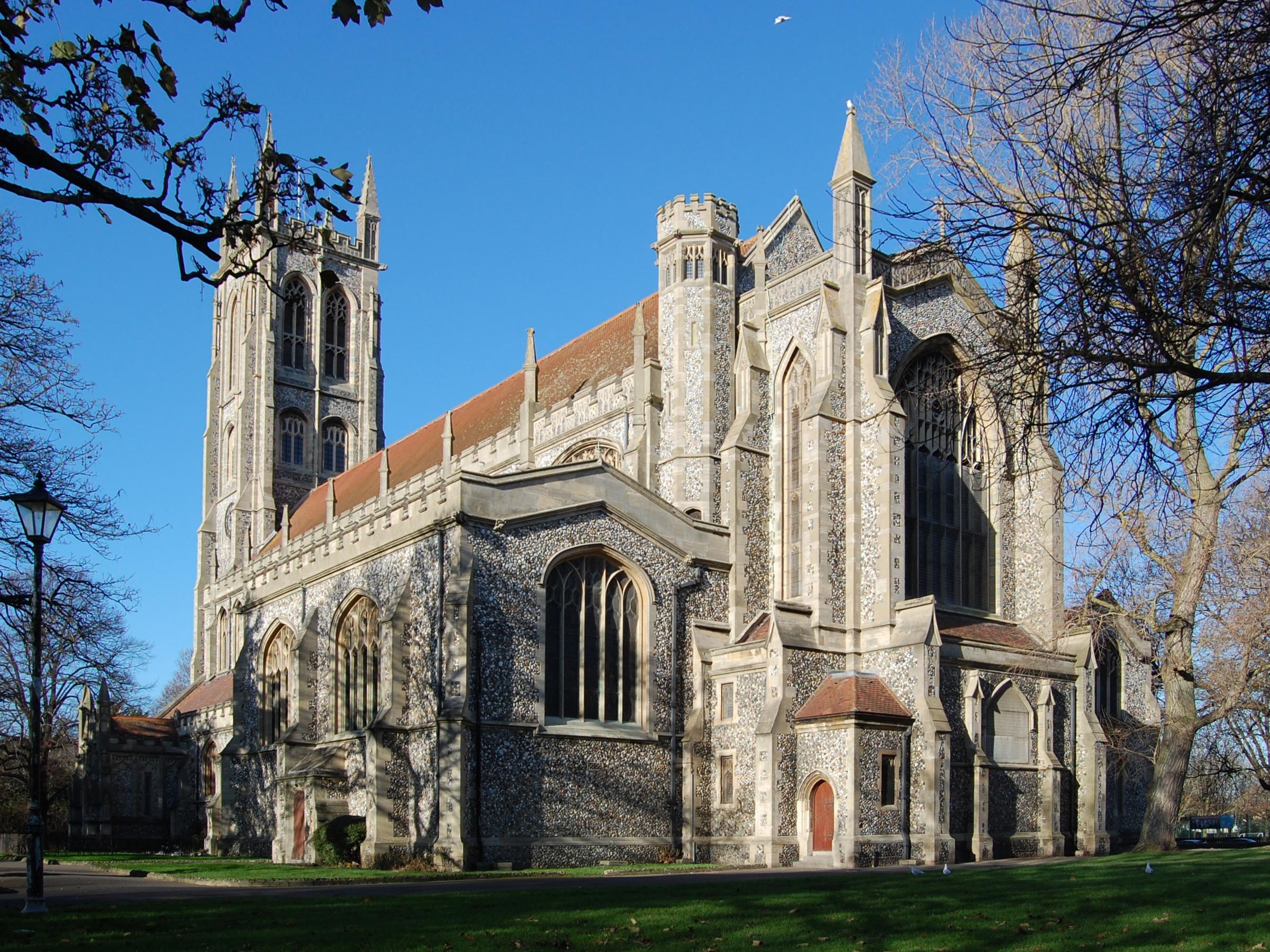All Saints
Portsmouth, Hampshire

St Mary's stands on the oldest church site on Portsea Island, Hampshire, England, with a history stretching back to the 11th century.
Portsea, Hampshire
Archaeological research indicates that there was a church here in 650, although 1170 is the earliest date in recorded history.
Throughout its history the church has played an important role in the life of the island, especially for the local communities of Fratton, Landport and Buckland. The current church was built in the 1887 to a design by Arthur Blomfield and is a major landmark in the city. Its tower can be clearly seen rising above the surrounding terraces. The church was built with the support of WH Smith, then the First Lord of the Admiralty, to serve the needs of the city and to be an inspiration to all who saw it.
The building is a notable example of its era and contains many fine pieces, especially the Walker organ designed for the church. The organ has been described by a contemporary expert as being of 'national importance'. In addition to building the parish church, a number of other buildings, institutes and mission halls were built to serve all who lived and worked in this area of the city, especially those struggling in what was a deprived area. The history of this period is nationally known and St Mary's holds a place in folk lore, particularly as two vicars at the start of the 20th century went on to become Archbishop of Canterbury (Lang) and Archbishop of York (Garbett). The building is Grade II* listed and sits in an extensive churchyard.
While many things have developed in the city around it, St Mary's continues to be a landmark and a place held in the affections of many who live and work in the city. It has witnessed hundreds of marriages over the years, as well as having touched many people's lives through its various mission churches, institutions, clubs, groups and choir. Many regard it as 'their' church even though they have long moved out of the geographical parish. The present church council and congregation are keen to honour the vision and ethos of the builders of the church 120 years ago and ensure it both remains a landmark, serves the needs of the local community and city and seeks to inspire all who visit it.
The organ of St Mary's Portsea is an intregral part of Canon Edgar Jacob's grand vision. In 1888 plans for an organ to match the scope and scale of the new building were drawn up. The firm of JW Walker were selected to provide a new instrument for the building with George Martin, organist of St Paul's Cathedral, acting as consultant. Plans were made for a grand four manual instrument, but funds were scarce. The result was a three manual instrument of thirty eight speaking stops, albeit with a four manual console which was completed in October 1892.
Within the grounds of St Mary's church and the church itself are many memorials and these include the Portsea Parishioners WWI Cross, St Mary's Parishioners (Boer War) and memorials to many different ships. St Mary's was designed by Arthur Blomfield and is a fine example of a Victorian building. The current church contains one of the finest Walker Organs in England.
Charles Dickens and Isambard Brunel were both baptised in the previous church on this site. The font was given to St James Milton, and the one in the church now is a later addition.
Portsmouth, Hampshire
Portsmouth, Hampshire
An evangelical style Victorian church at the heart of inner city Portsmouth.
Copnor, Hampshire